Grow Lemongrass at Home and transform your kitchen into a fragrant, flavorful paradise! Have you ever dreamt of snipping fresh lemongrass straight from your garden for your favorite Thai curry or soothing herbal tea? It’s easier than you think, and this DIY guide will show you exactly how to make it happen. For centuries, lemongrass has been cherished in Southeast Asian cultures, not just for its culinary uses, but also for its medicinal properties and delightful citrusy aroma. Imagine the satisfaction of cultivating this versatile herb yourself!
But why should you bother learning to grow lemongrass at home? Well, for starters, store-bought lemongrass can be expensive and often lacks the vibrant freshness of homegrown. Plus, knowing exactly where your food comes from is incredibly rewarding. This DIY project is perfect for anyone, regardless of gardening experience. Whether you have a sprawling backyard or just a sunny windowsill, I’ll guide you through the simple steps to successfully cultivate your own lemongrass. Get ready to enjoy the taste of fresh, homegrown lemongrass in all your culinary creations – and maybe even impress your friends with your newfound gardening skills!
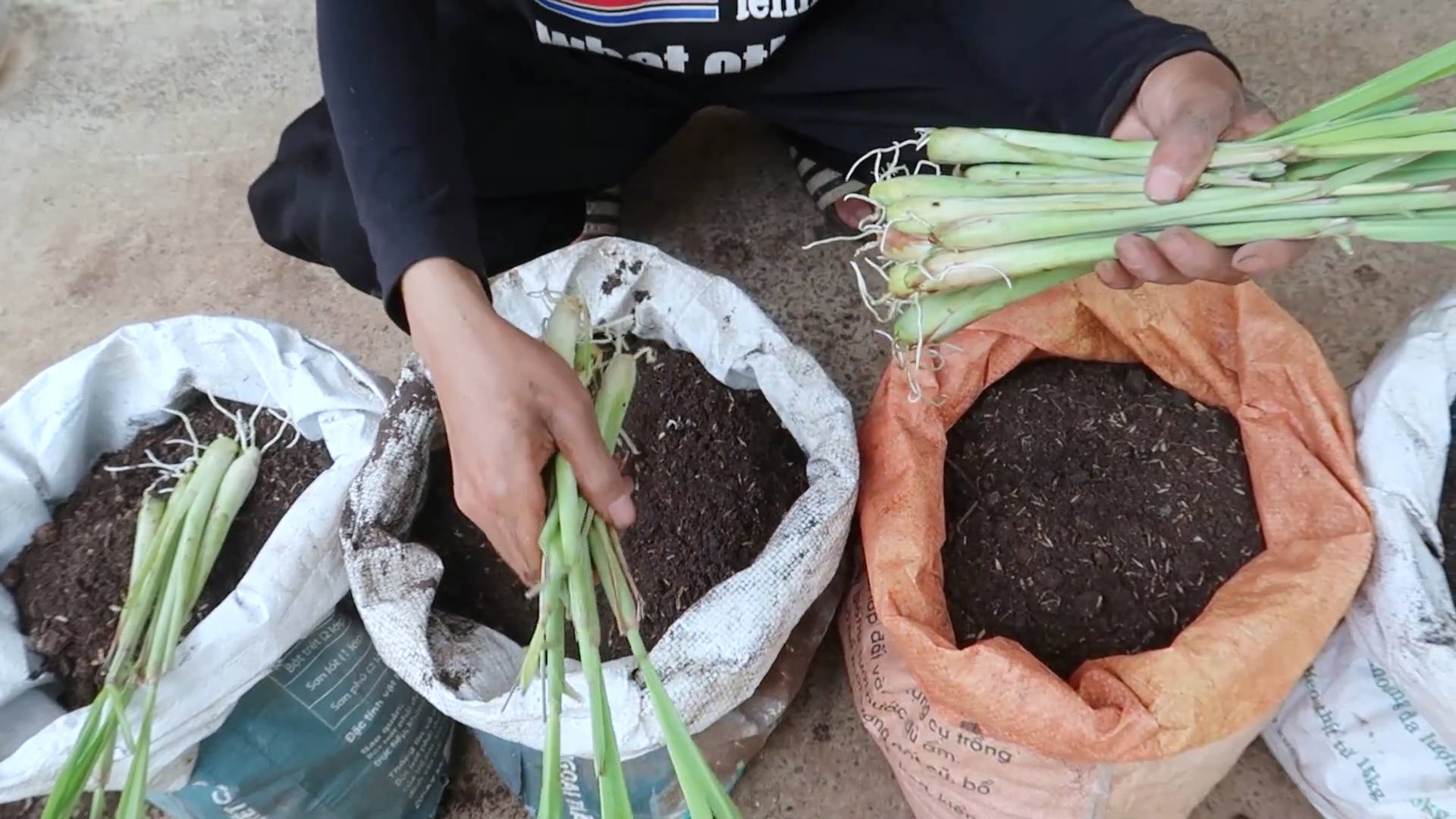
Grow Your Own Lemongrass: A Beginner’s Guide
Hey there, fellow plant enthusiasts! Ever dreamt of having fresh, fragrant lemongrass right at your fingertips? Well, dream no more! Growing lemongrass at home is surprisingly easy, and I’m here to guide you through every step of the process. Trust me, the satisfaction of snipping off a stalk for your favorite Thai curry or a soothing cup of tea is totally worth it. Let’s get started!
Choosing Your Lemongrass Starting Point
Before we dive into the nitty-gritty, you need to decide how you want to start your lemongrass journey. You have a few options:
* From Seed: This is the most economical option, but it requires a bit more patience. You’ll need to start the seeds indoors a few weeks before the last expected frost.
* From Cuttings (Store-Bought Stalks): This is my preferred method because it’s quick, easy, and readily available. You can usually find lemongrass stalks at your local grocery store or Asian market. Just make sure they have a bit of the root end still attached.
* From a Potted Plant: If you’re lucky enough to find a potted lemongrass plant at a nursery, go for it! This is the fastest way to get a thriving plant.
For this guide, I’ll focus on growing lemongrass from store-bought stalks, as it’s the most accessible method for most people.
Preparing Your Lemongrass Cuttings
Okay, you’ve got your lemongrass stalks. Now it’s time to get them ready for planting!
1. Select Healthy Stalks: Choose stalks that are firm, green, and have a healthy-looking base. Avoid any that are brown, mushy, or show signs of damage.
2. Trim the Tops: Using sharp scissors or pruning shears, trim the top of each stalk, leaving about 4-5 inches of the base. This encourages the plant to focus its energy on root development.
3. Remove Outer Leaves: Gently peel away any dry or damaged outer leaves from the base of the stalk. You want to expose the fresh, green inner layers.
4. Rooting in Water: This is where the magic happens! Place the prepared stalks in a glass or jar filled with about 1-2 inches of water. Make sure the base of the stalks is submerged, but the trimmed tops are above the water line.
5. Find a Sunny Spot: Place the glass in a warm, sunny location, like a windowsill. Change the water every 1-2 days to keep it fresh and prevent bacteria growth.
6. Wait for Roots: Be patient! It usually takes about 1-3 weeks for roots to start appearing. You’ll see small, white roots emerging from the base of the stalks. Once the roots are about 1-2 inches long, they’re ready to be planted.
Planting Your Rooted Lemongrass
Now that your lemongrass stalks have sprouted roots, it’s time to give them a permanent home!
1. Choose the Right Pot (or Garden Spot): Lemongrass needs plenty of space to grow. If you’re planting in a pot, choose one that’s at least 12 inches in diameter. If you’re planting in the garden, make sure to space the plants about 2-3 feet apart.
2. Prepare the Soil: Lemongrass thrives in well-draining soil that’s rich in organic matter. You can use a good quality potting mix for containers or amend your garden soil with compost or aged manure.
3. Dig a Hole: Dig a hole that’s slightly larger than the root ball of your lemongrass stalk.
4. Plant Carefully: Gently remove the lemongrass stalk from the water and place it in the hole. Make sure the top of the root ball is level with the surrounding soil.
5. Fill and Water: Fill the hole with soil, gently firming it around the base of the plant. Water thoroughly to settle the soil and help the roots establish.
Caring for Your Lemongrass Plant
Congratulations! You’ve successfully planted your lemongrass. Now, let’s talk about how to keep it happy and healthy.
* Sunlight: Lemongrass loves sunshine! Aim for at least 6-8 hours of direct sunlight per day. If you’re growing it indoors, place it near a sunny window or supplement with a grow light.
* Watering: Keep the soil consistently moist, but not soggy. Water deeply when the top inch of soil feels dry to the touch. During hot, dry weather, you may need to water more frequently.
* Fertilizing: Feed your lemongrass plant every 2-3 weeks during the growing season (spring and summer) with a balanced liquid fertilizer. Follow the instructions on the fertilizer label.
* Pruning: As your lemongrass plant grows, you can prune it to encourage bushier growth and prevent it from getting too leggy. Simply trim off any dead or yellowing leaves.
* Overwintering: Lemongrass is a tropical plant and is not frost-hardy. If you live in a cold climate, you’ll need to bring your potted lemongrass plant indoors before the first frost. Place it in a sunny location and reduce watering during the winter months. If you planted your lemongrass in the ground, you can try to dig it up and pot it before the frost, or you can treat it as an annual and replant it each spring.
Harvesting Your Lemongrass
The best part! You can start harvesting your lemongrass once the stalks are at least 1/2 inch thick at the base.
1. Choose Your Stalks: Select the outer stalks that are thick and mature.
2. Cut at the Base: Using a sharp knife, cut the stalk close to the ground.
3. Peel and Use: Remove the tough outer layers of the stalk until you reach the tender, white inner core. This is the part you’ll use in your cooking or tea.
4. Store Properly: Freshly harvested lemongrass can be stored in the refrigerator for up to a week. You can also freeze it for longer storage. Simply wrap the stalks tightly in plastic wrap or place them in a freezer bag.
Troubleshooting Common Lemongrass Problems
Even with the best care, you might encounter a few problems along the way. Here are some common issues and how to address them:
* Yellowing Leaves: This can be caused by several factors, including overwatering, underwatering, nutrient deficiencies, or pest infestations. Check the soil moisture, fertilize regularly, and inspect the plant for pests.
* Brown Leaf Tips: This is often a sign of dry air or inconsistent watering. Increase humidity by misting the plant regularly or placing it on a tray filled with pebbles and water.
* Slow Growth: This could be due to insufficient sunlight, poor soil, or lack of fertilizer. Make sure your lemongrass plant is getting enough sunlight, amend the soil with compost, and fertilize regularly.
* Pests: Lemongrass is generally pest-resistant, but it can occasionally be attacked by aphids or spider mites. Treat infestations with insecticidal soap or neem oil.
Enjoying Your Homegrown Lemongrass
Now that you’ve successfully grown and harvested your own lemongrass, it’s time to enjoy the fruits (or rather, stalks) of your labor! Here are just a few ways to use your homegrown lemongrass:
* Thai Curry: Lemongrass is a key ingredient in many Thai curries. Add it to your favorite recipe for a burst of citrusy flavor.
* Soups and Stews: Lemongrass can add a subtle, aromatic flavor to soups and stews. Simply bruise a stalk and add it to the pot while cooking. Remove the stalk before serving.
* Tea: Lemongrass tea is a refreshing and healthy beverage. Steep a few chopped stalks in hot water for 5-10 minutes. Add honey or lemon to taste.
* Marinades: Lemongrass can be used to create flavorful marinades for meat, poultry, or seafood.
* Insect Repellent: Lemongrass has natural insect-repelling properties. Crush a few leaves and rub them on your skin to ward off mosquitoes.
Propagating Your Lemongrass
Once your lemongrass plant is established, you can easily propagate it to create more plants.
1. Division: The easiest way to propagate lemongrass is by division. In the spring, carefully dig up the plant and divide the root ball into several smaller clumps. Each clump should have at least a few stalks and a good root system.
2. Replant: Replant the divisions in separate pots or in the garden. Water thoroughly and keep the soil moist until the plants are established.
Final Thoughts
Growing lemongrass at home is a rewarding experience that allows you to enjoy fresh, flavorful herbs whenever you need them. With a little bit of care and attention, you can have a thriving lemongrass plant that will provide you with years of culinary and aromatic enjoyment. So, go ahead and give it a try! You
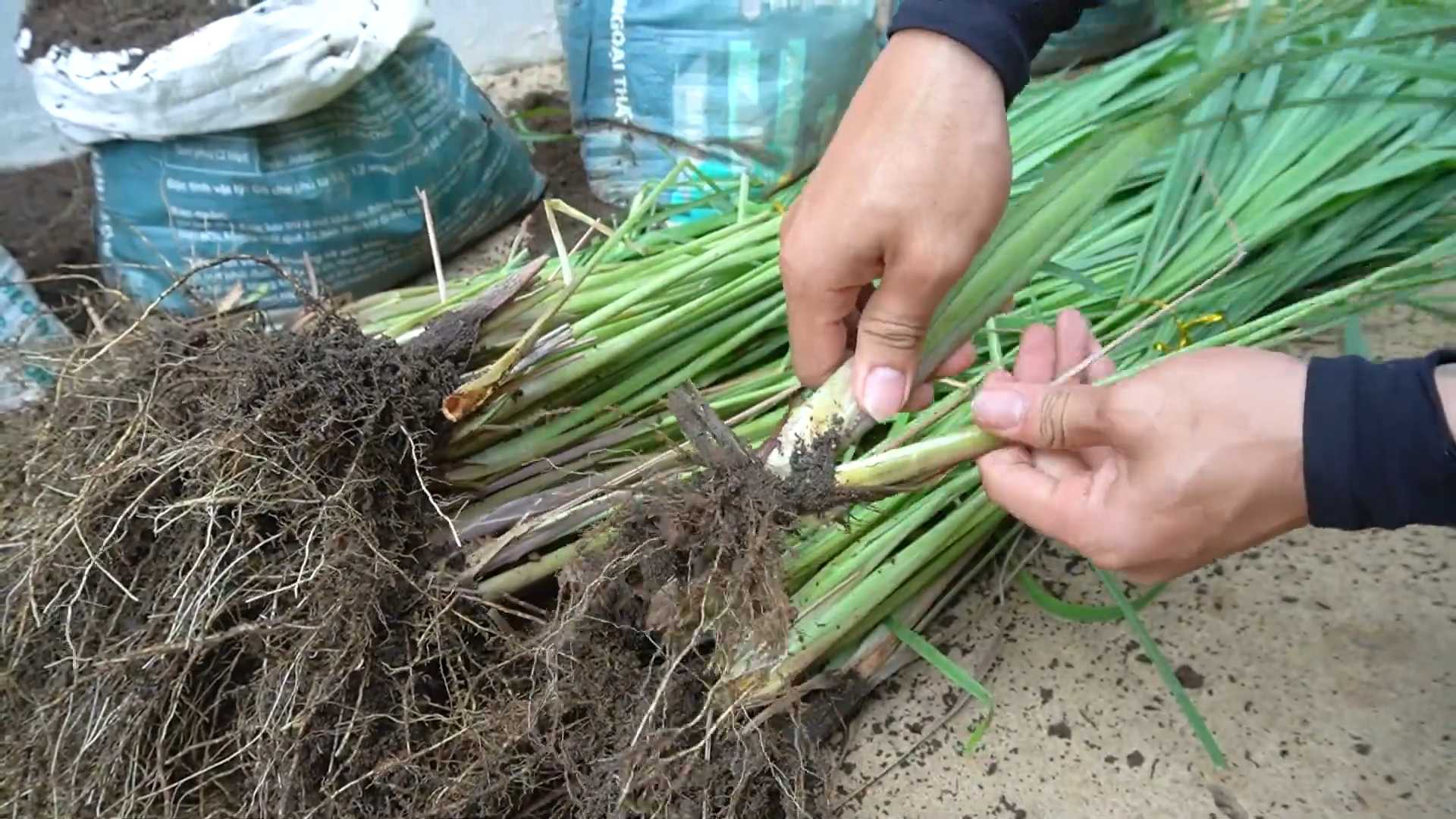
Conclusion
So, there you have it! Growing lemongrass at home is not only achievable, but it’s also incredibly rewarding. Imagine stepping into your kitchen and having fresh, fragrant lemongrass readily available for all your culinary adventures. No more last-minute trips to the store or settling for dried substitutes that lack the vibrant zest of the real thing. This simple DIY trick transforms your kitchen into a hub of fresh ingredients.
This isn’t just about convenience; it’s about connecting with your food on a deeper level. Nurturing your own lemongrass plant allows you to appreciate the journey from humble stalk to flavorful ingredient. Plus, you’ll be reducing your carbon footprint by cutting down on transportation and packaging waste. It’s a win-win for your taste buds and the planet!
But the benefits don’t stop there. Beyond its culinary uses, lemongrass boasts a range of potential health benefits, from its anti-inflammatory properties to its ability to aid digestion. Having a readily available supply means you can easily incorporate this powerhouse ingredient into your daily routine, whether it’s brewing a soothing tea or adding it to your favorite soups and curries.
Why is this a must-try? Because it’s easy, cost-effective, and yields a continuous supply of fresh lemongrass. It’s a small investment of time and effort that pays off in big flavor and satisfaction.
Looking for variations? Consider experimenting with different containers. While a simple glass of water works wonders for rooting, you can eventually transplant your lemongrass into a larger pot filled with well-draining soil. This will allow it to grow even bigger and produce more stalks. You can also try growing different varieties of lemongrass, such as the East Indian or West Indian types, each with its own unique flavor profile.
Ready to take the plunge? We wholeheartedly encourage you to give this DIY trick a try. It’s a fun and fulfilling project that will add a touch of freshness and flavor to your life. Don’t be afraid to experiment and adapt the process to suit your own needs and preferences.
And most importantly, we want to hear about your experience! Share your photos, tips, and success stories in the comments below. Let’s create a community of lemongrass enthusiasts and inspire others to embrace the joy of growing their own food. Your insights could be invaluable to someone just starting out. So, grab a few lemongrass stalks, get your hands dirty, and embark on this exciting journey. You’ll be amazed at how easy it is to grow lemongrass at home and the delicious rewards it brings.
Frequently Asked Questions (FAQ)
How long does it take for lemongrass to root in water?
Generally, you can expect to see roots emerging from your lemongrass stalks within 1 to 3 weeks. The exact timeframe will depend on factors such as the freshness of the stalks, the water temperature, and the amount of sunlight they receive. Be patient and remember to change the water every few days to keep it fresh and prevent bacterial growth. If you don’t see any roots after 3 weeks, it’s possible that the stalks are not viable, and you may need to try with a new batch.
What kind of water should I use to root lemongrass?
Tap water is perfectly fine for rooting lemongrass, but it’s best to let it sit out for a few hours to allow any chlorine to dissipate. You can also use filtered water if you prefer. Avoid using distilled water, as it lacks the minerals that can help promote root growth. The key is to use clean, fresh water that is free from any contaminants.
How much sunlight does lemongrass need?
Lemongrass thrives in full sun, meaning it needs at least 6 to 8 hours of direct sunlight per day. If you’re growing your lemongrass indoors, place it near a sunny window where it can receive ample light. If you don’t have a sunny window, you can supplement with a grow light. Insufficient sunlight can lead to weak, leggy growth and reduced flavor.
When should I transplant my lemongrass from water to soil?
Once the roots are about 2-3 inches long, it’s time to transplant your lemongrass into soil. Choose a pot that is at least 6 inches in diameter and has drainage holes. Use a well-draining potting mix that is rich in organic matter. Gently remove the lemongrass from the water and plant it in the pot, making sure to cover the roots completely with soil. Water thoroughly after planting.
What kind of soil is best for growing lemongrass?
Lemongrass prefers well-draining soil that is rich in organic matter. A good potting mix for lemongrass would be a combination of garden soil, compost, and perlite or vermiculite. The compost will provide nutrients, while the perlite or vermiculite will improve drainage. Avoid using heavy clay soil, as it can become waterlogged and lead to root rot.
How often should I water my lemongrass?
Water your lemongrass regularly, especially during hot, dry weather. The soil should be kept consistently moist, but not waterlogged. Check the soil moisture by sticking your finger into the soil. If the top inch feels dry, it’s time to water. In general, you’ll need to water more frequently during the summer months and less frequently during the winter months.
How do I harvest lemongrass?
To harvest lemongrass, simply cut off the stalks near the base of the plant. Use a sharp knife or pruning shears to make a clean cut. You can harvest individual stalks as needed, or you can harvest the entire plant at once. The lower, thicker portion of the stalk is the most flavorful.
Can I grow lemongrass indoors year-round?
Yes, you can grow lemongrass indoors year-round, provided you give it enough sunlight and water. Place it near a sunny window or use a grow light to supplement the sunlight. Water regularly and fertilize every few weeks with a balanced fertilizer. You may need to repot your lemongrass into a larger container as it grows.
Is lemongrass a perennial or an annual?
Lemongrass is a perennial in warm climates (USDA zones 9-11), meaning it will come back year after year. In colder climates, it is typically grown as an annual, meaning it will need to be replanted each year. However, you can overwinter your lemongrass indoors by bringing it inside before the first frost.
How do I overwinter lemongrass?
To overwinter lemongrass indoors, dig it up from the garden before the first frost and pot it in a container. Cut back the foliage to about 6 inches. Place the pot in a cool, bright location, such as a sunny window or a greenhouse. Water sparingly, allowing the soil to dry out slightly between waterings. In the spring, after the last frost, you can transplant your lemongrass back into the garden.
What are some common problems with growing lemongrass?
Some common problems with growing lemongrass include root rot, spider mites, and aphids. Root rot is caused by overwatering and can be prevented by using well-draining soil and watering only when the soil is dry to the touch. Spider mites and aphids are common pests that can be controlled with insecticidal soap or neem oil.
Can I eat the entire lemongrass stalk?
While the entire lemongrass stalk is edible, the lower, thicker portion is the most flavorful and is typically used in cooking. The upper, tougher portion can be used to make tea or added to soups and stews for flavor. Be sure to remove the tough outer layers before using the lemongrass in your dishes.
Does lemongrass have any health benefits?
Lemongrass is believed to have a number of health benefits, including anti-inflammatory, antioxidant, and antimicrobial properties. It is also a good source of vitamins and minerals, such as vitamin C, potassium, and manganese. Lemongrass tea is often used to soothe digestive issues and relieve stress.
How can I use lemongrass in cooking?
Lemongrass is a versatile ingredient that can be used in a variety of dishes, including soups, curries, stir-fries, and marinades. It adds a bright, citrusy flavor to your food. To use lemongrass in cooking, simply bruise or chop the stalk and add it to your dish. You can also use lemongrass to make tea or infused oils.


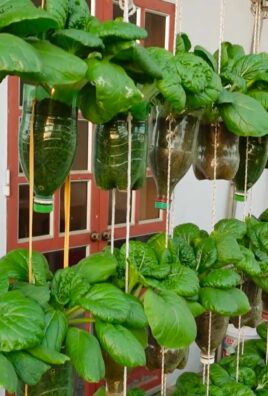
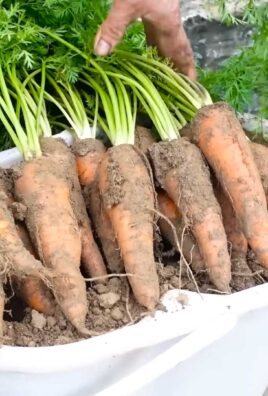
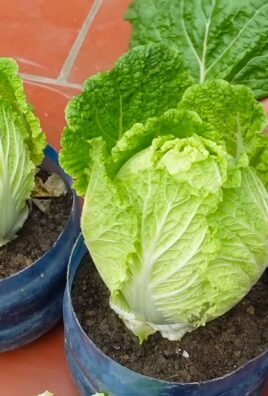
Leave a Comment